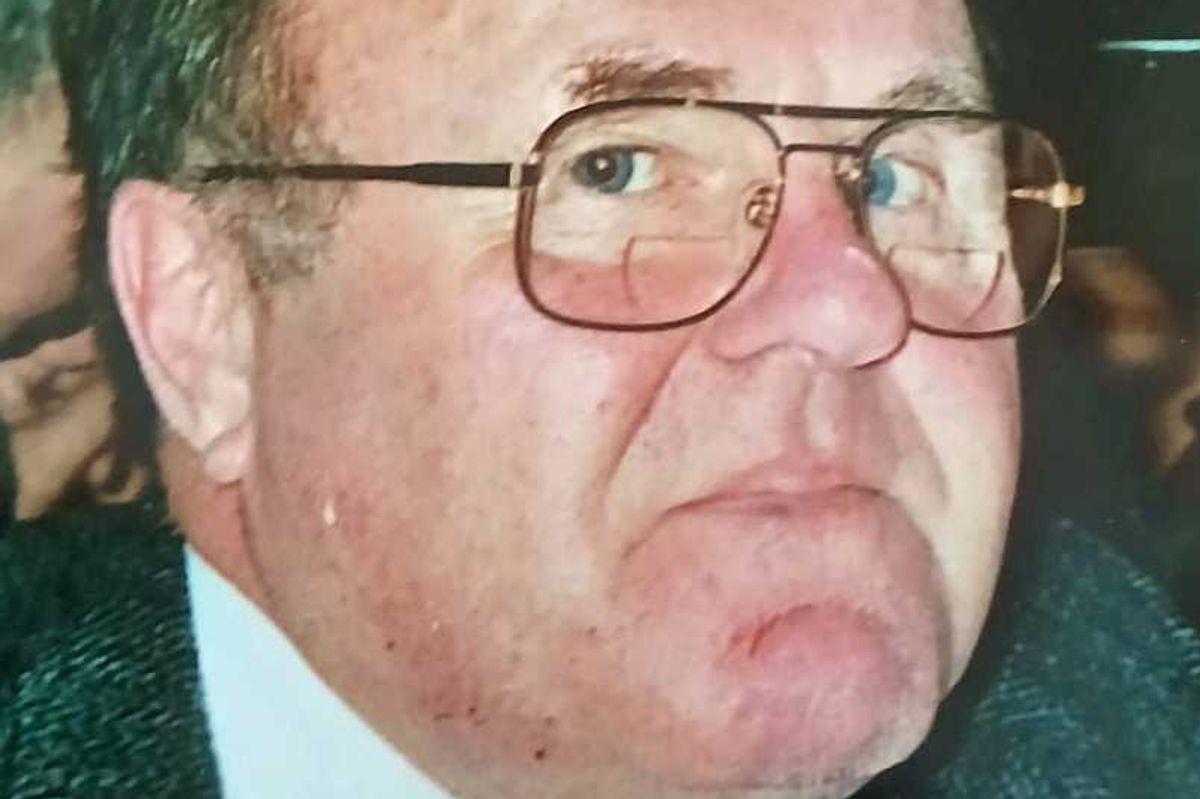Latest News
William Paul Corcoran
Dec 17, 2025
LAKEVILLE — Paul passed away on Dec. 7, 2025, surrounded by his loving family.
Paul was born on Aug. 24, 1940, to the late Gray and Gladys Vandyke.Paul spent most of his life in Lakeville.At an early age, he worked at Community Service in Lakeville along with his father. He then became the lumber yard manager.After leaving the Community Service, he worked as a custodian at Salisbury Central School.
He was predeceased by his four brothers, Tom, Jim, Jerry, and Peter.
Survivors are the love of his life, his wife Norma of 34 years, his two stepsons, Glen and Michael Surdam, his grandchildren, Ben, Franchesca, Glynn, Sierra, and Sidney.
Paul’s wishes were to be cremated and have no service.
Keep ReadingShow less
Jai Nathan Thomas Marshall
Dec 17, 2025
SHARON — Jai Nathan Thomas Marshall, 31, originally from Sharon, Connecticut, passed away unexpectedly on Dec. 4, 2025.
Born in Torrington, on April 4, 1994, he leaves behind his adoptive parents, Tom and Linda Marshall, a daughter, Mylieonah Jai Lynae Marshall, four sisters, Chauntine Donovan, Quinlin Marshall, Salirae “Ping” Marshall and Celie Besmer; two nieces, Zendaya Marshall and Inara Donovan and many cousins.
Jai also leaves behind his mom, Kathleen V. Ambery, his uncle, Noel F. Ambery ll and was predeceased by his grandparents, Noel “Frank” Ambery Sr. and Marie (nee) Barrow of Falls Village.
As a boy, Jai traveled across the world with his family and touched many lives. He had a wonderful sense of humor and a kind and gentle spirit. He gave us many years of joy until mental illness struck him in his prime. Jai loved his family and will be forever in our hearts. Rest in peace, our beautiful soul. To honor his memory, please say a prayer for all those who suffer endlessly and are misunderstood in our society. A private gathering will be held to celebrate Jai.
Keep ReadingShow less
Bernie Galek
Dec 17, 2025
WASSAIC — It is with profound sadness that we announce the unexpected passing of Leola ‘Bernice’ (Decker) Galek, on Nov. 14, 2025, aged 92, at home while on hospice, in Wassaic, where she was surrounded by the love of family and friends. Born on April 7, 1933 in the Town of Huron, New York, to Leola F. Decker and Luther Decker, Bernie lived a life marked by hard-work, compassion, and quiet strength.
Bernie met and married the love of her life, Stanley Galek, on Dec. 28, 1952, while working at the Coffee Cup in Wolcott, New York. Stanley and Bernie went on to own and operate the Galek Dairy Farm on Spring Lake Road, Town of Butler, from 1952 to 1997. Besides working in the Coffee Cup, Bernie also worked the breakfast shift at Billie’s Diner, and the Greek’s Restaurant in Wolcott before retiring from the Alzheimer ward at the Wayne County Nursing Home, Lyons, New York in 1995.
From a young age, Bernie knew her calling was to help others. She devoted 49 years as a Certified Nursing Assistant, bringing comfort to countless patients and families with her gentle spirit, shy smile and caring hands. Her colleagues admired her unwavering patience and personal warmth she brought into every room. She was known to volunteer to sit with bed bound patients at Sharon Hospital and Sharon Nursing Home.
Bernie was predeceased by her sisters, Alice Bergstressar, Dorothy Hall, and Gerry Van Norstrand; her brothers, Kenneth Decker and Marvin Decker; and her husband Stanley in 1997. After his passing, she spent the next 25 years in Wassaic, working at the Kent Specialty Care Nursing Home, in Kent where she retired at the age of 80.
She is survived by her son, Philip and wife, Laura Galek, grandson Phil Galek, great grandchildren, Gianna and Gavin Galek of Wolcott, New York; her daughter, Colleen and husband, Leon Meunier; grandsons, Chad and wife, Bambi Meunier and Justin Meunier, and granddaughter, Keirstin Meunier of Wassaic.
Family and friends were the center of Bernie’s life. She delighted in watching her grandchildren grow and was known for taking them out of school to go to Four Brothers or Round to-it for lunch. Her favorite shows were Gunsmoke and Roy Rogers. Favorite artists included Charley Pride, Freddy Fender and Eddy Albert.
Bernie will be remembered for her devotion to her lifelong faith as one of Jehovah’s Witnesses, where she viewed the resurrection hope in John 5:28, 29, as a source of comfort and light. She longed for the day when she will be reunited with the love of her life, Stanley.
“Happy Trails to you, Mom and Grandma, until we meet again.” - Roy Rogers and the Sons of the Pioneers.
Everyone who knew her is welcome to join us in a celebration of her life on Saturday, Dec. 27, 2025 at the Kingdom Hall on the corner of 101 East Duncan Hill Road and Route 22, Dover Plains, NY at 2:00 p.m.Light refreshments will be served after.
ZOOM INVITE: For Saturday, December 27, 2025
Invite: 755 086 9766
Passcode: 51764
Messages of condolence, fond memories or any photos would be greatly appreciated.
All are welcome to sign Bernie’s online obituary book/ memorial wall at https://hufcutfuneralhome.com/book-of-memories/5663406/Galek-Bernie/index.php
May also use this Email to send messages: LebGalek2025@gmail.com.
Keep ReadingShow less
Bonnie Lynn Hunter Sheldon
Dec 17, 2025
CANAAN — Bonnie Lynn Hunter Sheldon, 75, of East Canaan, passed away Nov. 28, 2025, at Charlotte Hungerford Hospital in Torrington, where she was born on Dec. 17, 1949.
Bonnie was the daughter of Lester William (Bill) Hunter, Jr., and Huldah (Bet) O’Donnell Hunter.She grew up in Canaan and spent her entire life in the Northwest Corner. She was a graduate of Housatonic Valley Regional High School and received her BA degree from George Washington University. She later did advanced studies in Gerontology at the University of Hartford.
Bonnie was the wife of Robert Sheldon prior to her move to East Canaan where she lived for the past 23 years with her partner, Robert Mather.
Bonnie’s early career was as an assistant doing research and editing for the syndicated columnist, Robert Yoakum, in Lakeville. Her interest in and passion for politics and current events continued throughout her life.In her later life she made a career change and became a recreational therapist at Noble Horizons in Lakeville. She loved and cared deeply for the residents she worked with.Her kind, compassionate nature made her a natural in the field of geriatrics.Bonnie loved animals and to the delight of the residents she brought her dog to work with her.
An avid runner, Bonnie competed in numerous local 5K and 10K road races for many years. Her other interests, talents and loves were reading, puzzling, gardening and cooking. She loved reading as a young child and went through most of the available books at the Douglas Library. This love of reading and writing continued through her study of literature and journalism at George Washington University. Additionally, she was a wonderful grandmother. She always enjoyed and supported her grandkids’ curiosity, loved watching them swim, and kept a nurturing eagle eye on them and their safety while in her care.
Survivors include her brother, Barry James Hunter and wife Christine, ofLempster, New Hampshire, her two aunts, Lynn Hunter Cline, of Sharon, and Cynthia Hunter Fenton and husband Terence, of Lincoln, Massachusetts, Robert Mather, of East Canaan, his son Justin Mather and wife Caryn Wright of Boulder City, Nevada, two daughters, Sarah Pollock and husband Brendan Pollock of Southfield, Massachusetts, and Bethany Mielke and partner Jamie Foster of Sandisfield, Massachusetts, grandchildren Isabella Pollock, Fiona Pollock, and Evan Mielke as well as numerous nieces and cousins. She was predeceased by her brother, Robert (Duffer) Hunter.
Calling hours and a church service will be held in January.Date and time will be announced. The Newkirk-Palmer Funeral Home of Canaan, CT, is in charge of arrangements. In lieu of flowers, memorial contributions may be made to North Canaan Volunteer Ambulance Corp. PO Box 178, 15 Main Street, North Canaan, CT 06018, www.northcanaanems.org.
Keep ReadingShow less
loading









